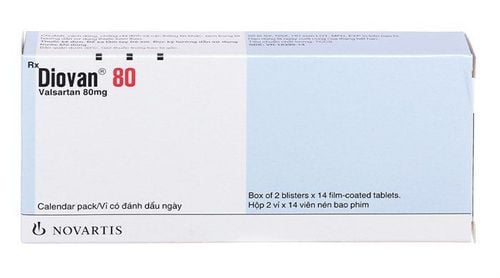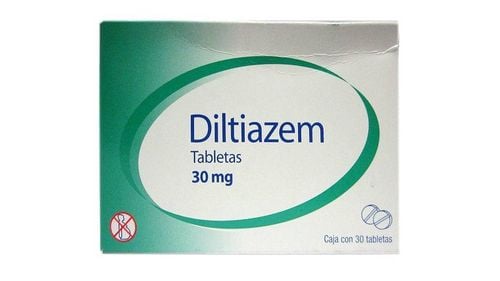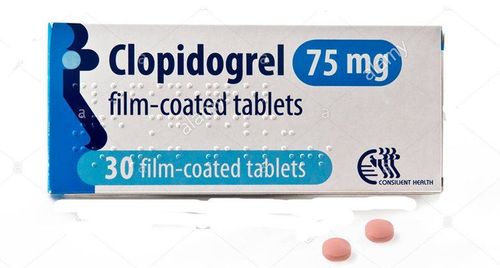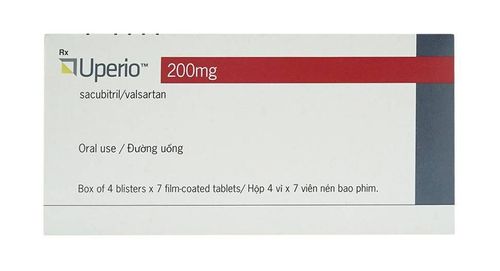This is an automatically translated article.
The article was written by Professor, Doctor, Doctor Do Doan Loi, Cardiology Center - Vinmec Times City International General HospitalThe fact that female nurse Vi Thi Tan (born in 1985) suffered from heart disease for 10 years, end-stage heart failure, enlarged heart and received a partial artificial heart transplant (HVAD) markedly improved the quality of her life. Life has brought hope to thousands of people with heart failure. The following article will provide basic information about this method, as a reference for people with heart failure to choose treatment.
1. What is a partial artificial heart transplant?
Partial artificial heart transplant, also known as left ventricular support artificial heart transplant, is surgery to attach an artificial device: a left ventricular assist device (Left Ventricular Assist Device LVAD manufactured by Medtronic). into the patient's heart to support the function of a part of the heart (left or right ventricle) that is weakened, dilated end-stage heart muscle. The ventricular assist device (LVAD) is a mechanical pump. When one of the heart's natural pumps (a ventricle) is not working properly, a ventricular assist device is used to help increase blood flow in the body, maintaining normal functioning of the circulatory system. of the patient.
Currently, partial artificial heart transplant surgery is still a new technique in Vietnam due to its high cost. Worldwide, this technique has been deployed in nearly 20,000 cases. Technology is always improving and efficiency is improving rapidly with time: patients have lived up to 10 years and now partial heart transplants are not just a bridge for patients waiting for a transplant. heart failure that could be a targeted treatment for patients with heart failure.
2. In which patients is partial artificial heart transplant indicated?
If you are diagnosed with heart failure, it does not mean that your heart stops working; This only indicates that your heart is weak, so it cannot deliver enough oxygen-rich blood and nutrients to the cells and organs in the body. Common symptoms of heart failure include fatigue and shortness of breath. Daily activities such as walking, climbing stairs or carrying objects can be more difficult. Heart failure impairs renal perfusion and affects the kidneys' ability to process waste and excess water and causes edema. Heart failure is usually a chronic, progressive condition where the heart becomes so weak that it can no longer pump enough blood to meet the body's needs. When the heart failure condition is in the end stage, you will be prescribed by a doctor for treatment of a heart transplant or a partial artificial heart transplant

Các triệu chứng thông thường của suy tim bao gồm mệt mỏi và khó thở
3. How will I know if I am suitable for treatment of heart failure with a partial heart transplant?
Through consultation with your clinician, you and your doctor can decide whether the use of a partial artificial heart implant system is right for you. Your doctor will talk to you about the potential benefits and risks of surgery and implantation of a partial heart implant system. You can ask your doctor to get all your questions, concerns, concerns answered before treatment.
4. Treatment with partial artificial heart transplant, how is the patient's survival time and quality of life?
The partial artificial heart implant system is designed to support heart failure, relieving symptoms of progressive heart failure while awaiting a heart transplant. By reducing symptoms of heart failure, you'll feel better and be able to function better.
This method allows patients to prolong their quality of life 5-7 years, even in some cases to more than 10 years.
5. After partial artificial heart transplant surgery, what should the patient do to ensure that the implanted device works properly and works well?
To keep the heart device working in your body, you need to understand how it works.
The HVAD pump is surgically implanted in the chest. The pump is connected directly to the left ventricular apex. Here, the left ventricle along with the pump takes in oxygen-rich blood and pushes it into your aorta (the large blood vessel that carries blood from your heart to your entire body). The clinician will program the HVAD pump to deliver blood flow tailored to your body's needs. The power line is connected to the pump and exits the body through a small incision in the skin. Power transmission line connected to the controller.
This controller is a mini computer that monitors the HVAD pump. The controller displays metrics and sounds alarms when parameters change or the battery is low to help you manage the system. The controller always has two power supplies: two batteries (rechargeable) or one battery and power from the mains or car outlet. The controller and battery are stowed in the shoulder bag.
Therefore, every day, patients with partial artificial heart transplants only need to carry a specialized battery with them in a belt or a compact shoulder bag and can still work and work almost normally after surgery.
In addition, after partial implantation of the artificial heart, the patient still has to comply with the special requirements of cardiovascular patients, especially compliance with taking anticoagulants such as those with artificial heart valves.
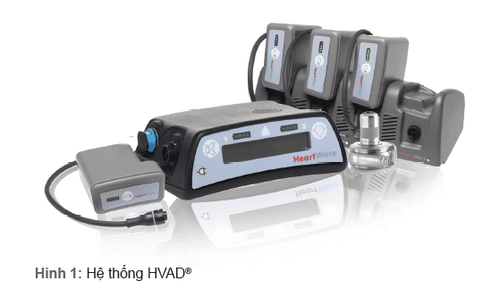
Máy tính mini giám sát bơm HVAD
Please dial HOTLINE for more information or register for an appointment HERE. Download MyVinmec app to make appointments faster and to manage your bookings easily.




